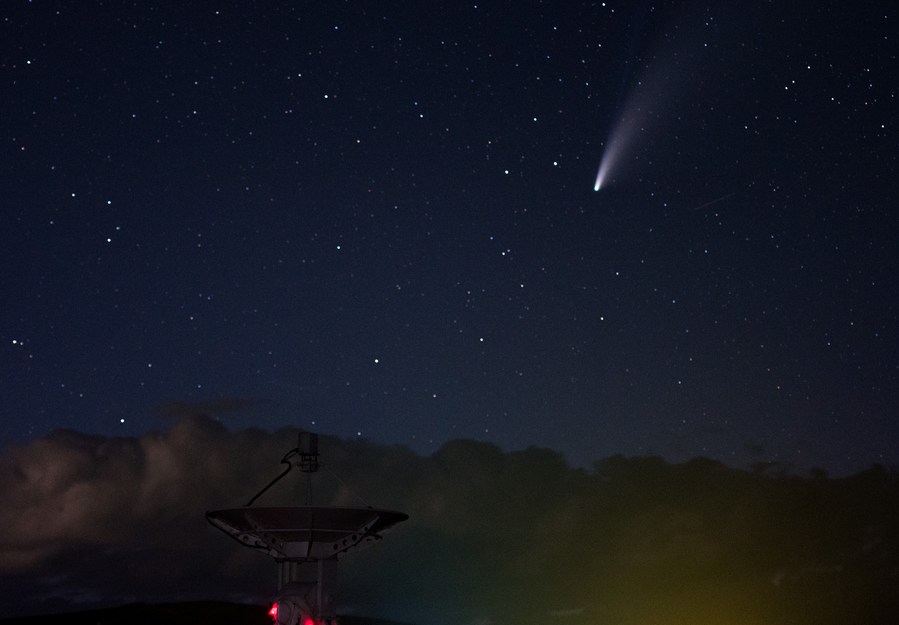Chinese astronomers uncover new discoveries about two comets

Photo taken on July 18, 2020 shows Comet NEOWISE in the starry sky over the Ming'antu observing station of the National Astronomical Observatories of the Chinese Academy of Sciences, in Zhengxiangbai Banner, north China's Inner Mongolia Autonomous Region. (Xinhua/Lian Zhen)
BEIJING, March 8 (Xinhua) -- Chinese astronomers have made new discoveries regarding their research on the activity of the first two comets discovered by the country, according to the Purple Mountain Observatory (PMO) under the Chinese Academy of Sciences.
The comets, coded 62P/Tsuchinshan 1 and 60P/Tsuchinshan 2, were spotted by the observatory in January 1965 and confirmed as new short-period comets after being reported to the International Astronomical Union's Minor Planet Center.
A research team from the PMO observed 60P/Tsuchinshan 2 from November 2018 to March 2019 through a high precision telescope and found a spiral structure in its inner coma, according to the study paper published in The Astrophysical Journal.
As a Jupiter family comet, it was very active compared to other comets of this kind at similar heliocentric distances, and its peak activity emerged about 10 days after perihelion, said the paper.
The team obtained the main activity parameters of the two comets by collecting 850 observations for 60P/Tsuchinshan 2 and 471 observations for 62P/Tsuchinshan 1 during a period of more than 20 years. They found the activity of the two comets enhanced as their perihelion distances decreased due to the disturbance by Jupiter's gravity, according to their another paper published in the journal Monthly Notices of the Royal Astronomical Society.
Photos
Related Stories
- Chinese discovery challenges classical theory of astrophysics
- Chinese astronomers detect 9 super lithium-rich unevolved stars
- Chinese astronomers find galactic "fruit, vegetable garden" outside Milky Way
- Chinese astronomers identify a simple rule beneath repeating fast radio bursts
- Chinese astronomers discover nearly 600 high-velocity stars
Copyright © 2023 People's Daily Online. All Rights Reserved.









